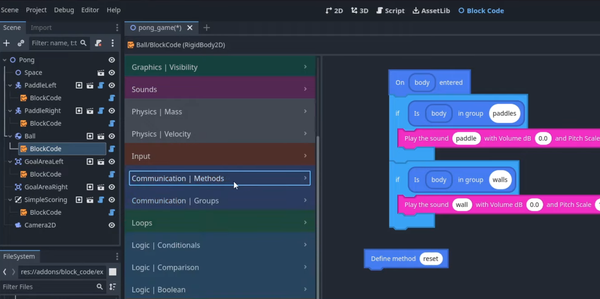Top 11 University Open-Source Projects for 2023 and 2024: Innovation Across Disciplines
Table of Content
Universities have long been at the forefront of technological innovation, consistently pushing the boundaries of what's possible in various fields. In recent years, the trend of releasing open-source projects has become an integral part of academic contributions, revolutionizing the way knowledge is shared and applied.
Throughout 2023 and 2024, numerous universities worldwide have continued this tradition, developing robust, community-driven software solutions that span a wide range of disciplines.
These cutting-edge projects cover an impressive array of applications, from advanced computational science and sophisticated machine learning algorithms to groundbreaking developments in biology and state-of-the-art web development frameworks.
By making these tools freely available, universities are not only fostering a spirit of collaboration and innovation but also democratizing access to powerful technologies that were once the domain of well-funded research institutions.
The open-source nature of these projects brings multiple benefits to the academic and professional communities. Researchers can build upon existing work, accelerating the pace of scientific discovery.
Developers gain access to high-quality, peer-reviewed code that can be integrated into their own projects. Students, meanwhile, have the opportunity to learn from and contribute to real-world applications, bridging the gap between theoretical knowledge and practical experience.
In this comprehensive post, we will delve into 11 of the most innovative and impactful open-source projects emerging from universities in 2023 and 2024. Our exploration will cover a diverse range of initiatives, each with its unique features and potential applications.
We'll provide detailed insights into the licenses under which these projects are released, ensuring readers understand the terms of use and distribution. Additionally, we'll highlight the key features that make each project stand out in its respective field and discuss potential use cases that demonstrate the practical value of these academic contributions.
By showcasing these projects, we aim to celebrate the spirit of open collaboration that drives academic innovation and to inspire further development and adoption of these powerful tools across various industries and research domains.
Join us as we embark on this journey through the landscape of university-led open-source innovation, discovering how these projects are shaping the future of technology and scientific research.
1. JAX
- University: Google Research and UC Berkeley
JAX is a high-performance machine learning and numerical computing framework in Python. It combines NumPy's ease of use with the power of GPU/TPU acceleration. Researchers can perform automatic differentiation and leverage JAX's vectorized operations for deep learning and scientific computing tasks.
- GitHub
- License: Apache License 2.0
2. Spack
- University: Lawrence Livermore National Laboratory (University of California)
Spack is a package manager designed for high-performance computing (HPC) environments. It streamlines complex software installations for HPC applications by efficiently managing dependencies and installation environments.
Widely adopted in national labs and research institutions, Spack simplifies the process of installing and utilizing scientific software, making it more accessible and manageable.
- GitHub
- License: Apache License 2.0
3. OpenFOAM
- University: The Open University and other collaborators
OpenFOAM is a leading computational fluid dynamics (CFD) tool for solving problems related to fluid flow, heat transfer, and associated physics.
Engineers and researchers in both academia and industry use it extensively for a wide range of simulations—from aerodynamics to hydrodynamics.
- Website
- License: GNU General Public License (GPL)
4. JSME Molecular Editor
- University: University of Alcalá (UAH)
JSME Molecular Editor is a web-based tool for drawing and visualizing chemical structures. It's ideal for education and research, simplifying the creation of chemical diagrams.
This accessibility makes it a valuable resource for both students and researchers in chemistry.
- Website
- License: GNU General Public License (GPL)
5. Pachyderm
- University: MIT
Pachyderm is an enterprise-grade data science platform that automates data pipelines. It prioritizes reproducibility and version control in data science workflows, enabling machine learning teams to manage large datasets more effectively while ensuring transparency and scalability.
- GitHub
- License: Apache License 2.0
6. FEniCS
- University: University of Cambridge and Simula Research Laboratory
FEniCS is an open-source computing platform that streamlines the solution of partial differential equations (PDEs) using finite element methods.
It serves as a powerful tool for scientists and engineers, particularly in fields such as fluid dynamics, structural mechanics, and electromagnetism.
- GitHub
- License: GNU Lesser General Public License (LGPL)
7. ODK (Open Data Kit)
- University: University of Washington
ODK (Open Data Kit) is a suite of open-source tools designed for data collection in challenging environments. It's particularly useful for research, health, agriculture, and humanitarian work.
ODK allows users to gather data offline and synchronize it when an internet connection becomes available, making it an invaluable resource for global fieldwork.
- GitHub
- License: Apache License 2.0
8. Neuroglancer
- University: Princeton University
Neuroglancer is a web-based tool for the interactive visualization of large-scale 3D volumetric data, such as brain imaging and neuron mapping. It allows researchers to visualize and navigate through vast neuroimaging datasets, aiding discoveries in neuroscience and medical research.
- GitHub
- License: Apache License 2.0
9. Genie.jl
- University: Massachusetts Institute of Technology (MIT)
Genie.jl is a highly flexible web framework for the Julia programming language. It’s designed to enable rapid development of high-performance web applications, offering real-time capabilities, an MVC structure, and powerful integrations with databases, making it a go-to choice for building modern web apps in Julia.
- GitHub
- License: MIT License
10. DeepLabCut
- University: Harvard University
DeepLabCut is a markerless pose estimation tool used for tracking the behavior of animals and humans in videos.
Researchers widely use it in fields like neuroscience, biology, and behavioral studies to study movements and gather data for complex behavioral patterns.
- GitHub
- License: GNU General Public License (GPL)
11. HOOMD-blue
- University: University of Michigan
HOOMD-blue is a general-purpose particle simulation toolkit designed for molecular dynamics and other scientific simulations. It’s GPU-accelerated, making it a powerful tool for research in fields like material science, soft matter physics, and molecular biology.
- GitHub
- License: BSD 3-Clause License
Conclusion
These open-source projects, developed by leading universities, reflect the power of academic innovation and collaboration. From computational fluid dynamics to neuroscience visualization, these projects are pushing the boundaries of what's possible in their respective fields.
With permissive licenses like Apache, MIT, GPL, and LGPL, they invite continuous development and integration, making them valuable assets for researchers, educators, and developers alike.








